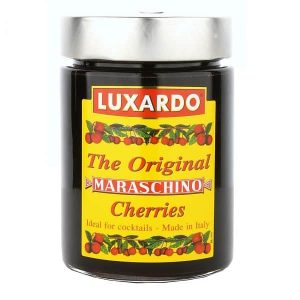 Last month, I returned to one of my favorite hotels in New York City. It was my first stay since the hotel completed an extensive renovation in 2012. I’ll withhold the name of the hotel because it’s not important. What matters are the observations below – which apply to countless businesses, lodging and otherwise, in New York City and beyond.
Last month, I returned to one of my favorite hotels in New York City. It was my first stay since the hotel completed an extensive renovation in 2012. I’ll withhold the name of the hotel because it’s not important. What matters are the observations below – which apply to countless businesses, lodging and otherwise, in New York City and beyond.
Let me say first that management made a lot of great decisions with regard to the renovations of the guest rooms and public space. And being that the hotel dates back to 1902, care was taken to capture and preserve notable aspects of the property’s rich history. And the majority of staff I encountered during my three-night stay was top-notch, expressing genuine interest in me and conveying authentic enthusiasm for serving guests.
What nagged at me throughout my stay, however, was the repeal of certain little “extras” that I’d come to expect from this hotel (and comparable hotels). For instance, at the bar I asked for a bowl of nuts and was told by the bartender that they no longer offer them.
“Cost containment?” I probed.
‘Exactly,” he replied, “We were spending $200,000 a year on nuts.”
Then I asked him why they don’t offer an upgraded bowl of warm roasted nuts with a generous supply of cashews and charge $12 for it? And because salted nuts make you thirsty, wouldn’t some percentage of guests likely order an additional beverage or two? (Heck, this may lead to an additional $200,000 in annual sales!) He treated my questions as though they were rhetorical and simply smiled while continuing to wipe down the bar.
Later, when the bartender served me a Manhattan with ordinary maraschino cherries, I asked him if he had any Luxardo maraschino cherries. He gave me that look of someone who wants to help but can’t, lamenting that while they used to stock them, due to cost containment measures, they were no longer offered at the bar. This bar charges $18 for a Manhattan with regular maraschino cherries. For enthusiasts like me, upgraded cherries complete the cocktail and would definitely influence my decision of whether or not to order one. How would the drink’s profit margin be affected by adding a Luxardo maraschino cherry in place of an ordinary one? Might it be reduced by 2 percent? If so, charge 36 cents more. (Anyone who’s willing to pay $18 for a Manhattan will pay $18.36 for a better Manhattan.)
On two separate mornings during my hotel stay I approached the restaurant hostess in the lobby and requested that a pot of coffee be delivered to a nearby table – where I’d planned to work for an hour or so. On both occasions I was given directions to the complimentary self-service coffee dispenser located in an alcove between the lobby and hotel bar.
Now, why is it that when I ordered water in the hotel restaurant the night before, I was given the option between complimentary tap water or a $9.50 chilled bottle of San Pellegrino water? The effectiveness of the pitch: “Would you prefer a chilled bottle of San Pellegrino water or New York City tap?” notwithstanding, it’s common for servers to upsell water. Why then would a guest requesting “a pot of coffee” be directed to a complimentary self-service coffee dispenser? Sell the coffee service!
Assemble a lined tray with a stainless steel thermal carafe filled with high-quality coffee, a sturdy ceramic cup, a small pitcher of half-and-half, a variety of sweeteners, a coffee spoon, and a cloth napkin. (And, perhaps, an orchid or carnation in a simple glass or ceramic vase.) Then deliver it with a bill. (Anyone staying in an upscale hotel who requests a pot of coffee will expect to pay for the coffee service – and will even pay a premium if the suggested flower adorns the tray.)
I once worked for a highly successful hotel general manager in the 1990s, now running a US$100M hotel in Hong Kong, who was fond of saying, “Stop counting paperclips and sell one more room!” Mark was always attuned to proactive revenue enhancement opportunities rather than relying on a sharp pencil and reactive cost containment measures. Mark is not naïve. He holds an MBA. He doesn’t need to be lectured on the financial benefits of controlling costs. He gets it. And more importantly, he understands the correlation between cost containment measures and reduced overall customer satisfaction.
Think about it: In what scenario is it preferable to tell a customer that you don’t offer the requested nuts or cherries due to cost containment measures? How does it support customer satisfaction or food and beverage sales to direct a customer toward the complimentary self-service coffee dispenser when he requested a pot of coffee be delivered to a nearby table in the lobby?
It is well-documented that customers are willing to pay double-digit premiums for exceptional product and service quality. And while capturing all that additional revenue, you will also see increases in overall customer satisfaction whenever customers can get what they want, how they want it, when they want it.



